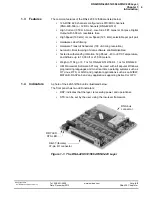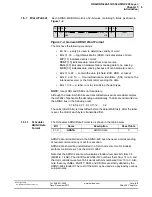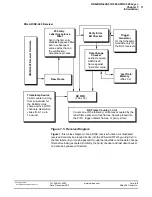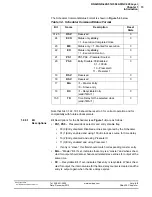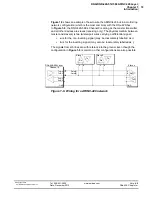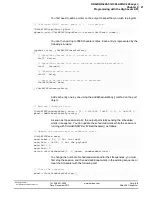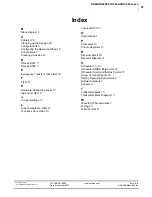
DNA/DNR-429-512/566 ARINC 429 Layer
Chapter 1
14
Introduction
Tel: 508-921-4600
www.ueidaq.com
Vers:
4.5
Date: December 2013
DNx-429-Chap1x.fm
© Copyright 2013
United Electronic Industries, Inc.
The 256-word output FIFO runs at a lower priority than the Scheduler and may
output data in either of two modes: (1) whenever the interface IC can accept
data and none is available from the Scheduler or (2) on a “paced” mode, based
on user-defined clock intervals.
An Emergency Transfer Transmitter transfers data from the high-priority register
immediately after the current TX operation is completed, and from the low-
priority register only when the data from the Scheduler and high-priority register
are not available.
Transmitter sources are assigned ARINC bus access according to the following
priorities:
1. High-priority Data Register OR*1. FIFO
2. Scheduler Data2. Scheduler Data
3. Low-priority Data Register3. Low-priority Data Register
4. FIFO4. High-priority Data Register
The HAL accepts data based on the priority scheme above and sends
confirmation after the data is accepted for transmission
NOTE:
*The Scheduler and FIFO priorities may be interchanged by setting the
FIFOHP bit in the
AR566_ACCR
register.
1.8.5
Scheduler
The Scheduler is programmed using two arrays in the memory address space
dedicated to the Scheduler command and associated ARINC data.Because of
space limitations, the arrays all share the same memory locations and may only
be accessed one block at a time using the
A566_TXFSR9
register as a selector.
The TX Scheduler ARINC data area occupies 256 32-bit locations and the
Scheduler Command/Status area occupies another 256 locations in layer
address space. Each command corresponds to one data location (the command
with index 0 corresponds to the data location with the matching index). Both
command and data areas allow read/write access and the command area, when
read, also incorporates status bits. Some of the status bits are “sticky.” To clear
them, the command entry must be re-written. As a general rule, the Scheduler
should be pre-programmed before enabling the ARINC transmitter, but may also
be changed at any time during operation.





